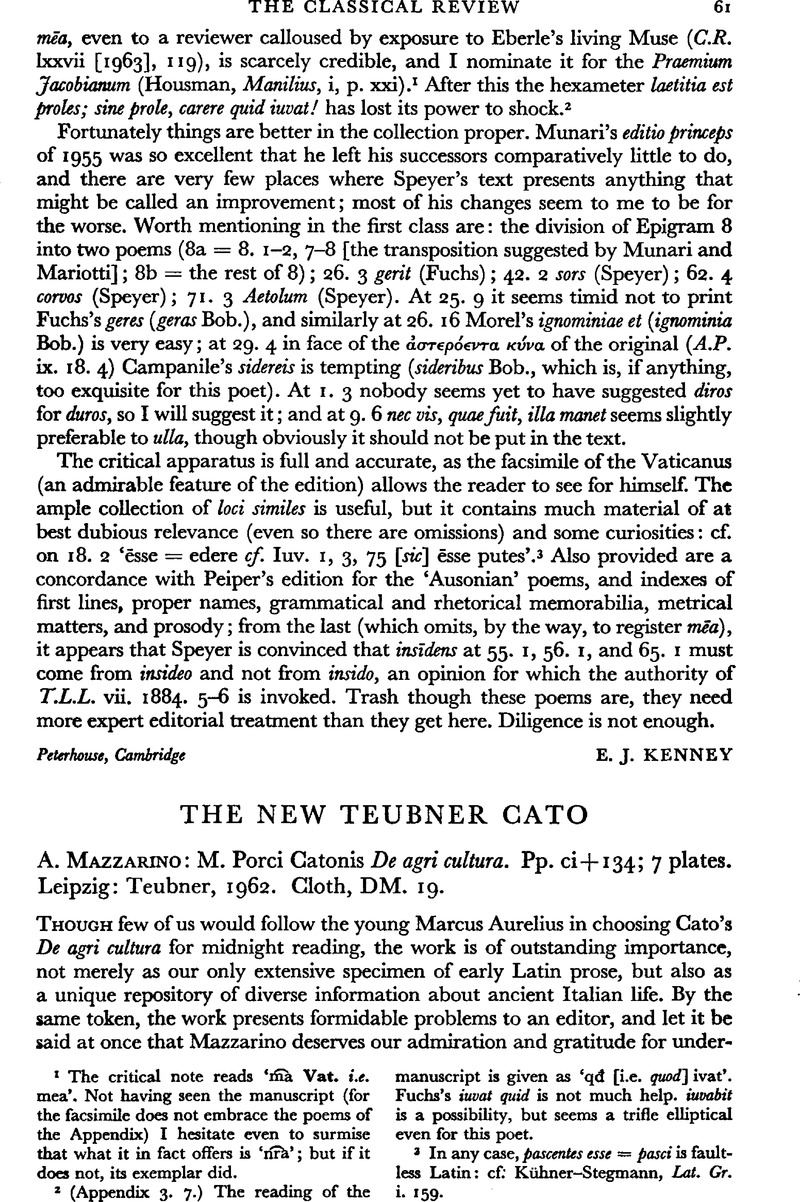No CrossRef data available.
Published online by Cambridge University Press: 27 February 2009

1 The critical note reads ‘

2 (Appendix 3. 7.) The reading of the manuscript is given as ‘đ [i.e. quod] ivat’. Fuchs's iuvat quid is not much help, iuvabit is a possibility, but seems a trifle elliptical even for this poet.
3 In any case, pascentes esse = pasci is faultless Latin: cf: Kühner–Stegmann, , Lat. Gr. i. 159.Google Scholar